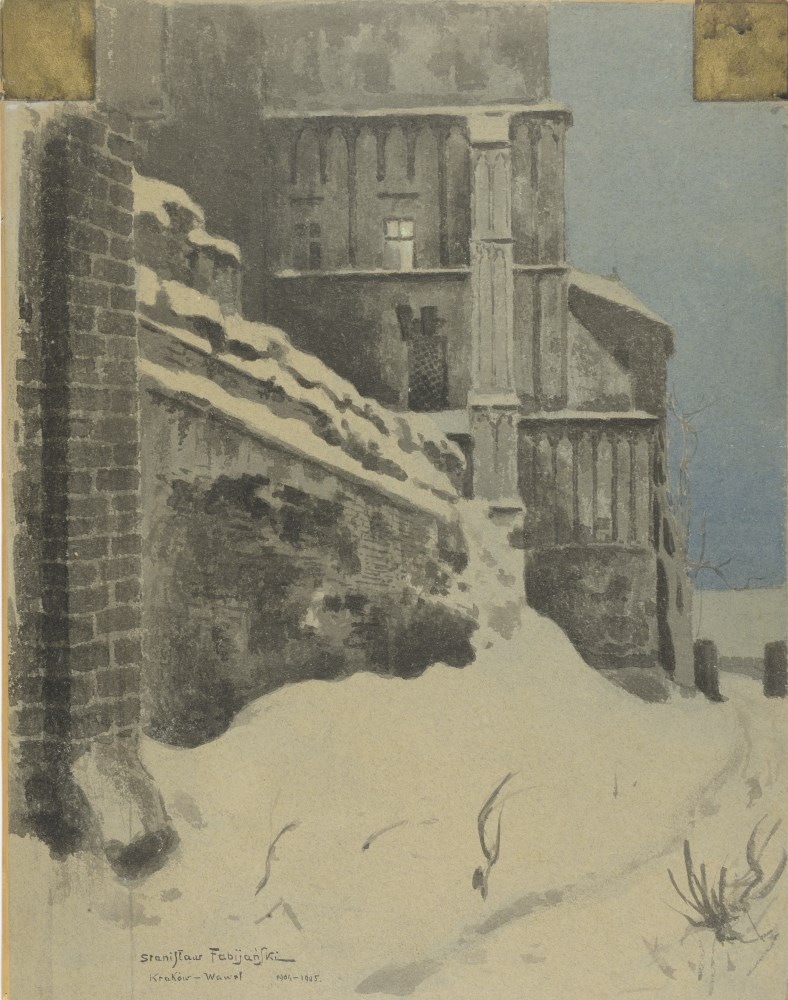Description:
Stanislaw Fabijanski (1865-1947) studied in Lviv, Krakow and Munich. After his studies he permanently settled in Krakow, which became his favorite subject of work. He most often painted famous, important historical places, although he tried to show them from new, interesting perspectives. He particularly often presented Wawel. He was also involved in sculpture, graphics, stained glass design, posters and magazine illustrations. Fabijanski often painted historical buildings, looking for interesting shots and frames. This time he presented a fragment of the gray wall of the Royal Castle at Wawel. In his composition he captured an open gate with a worn path and one illuminated window, which slightly warms and softens the severity of the historical building.
Description of the image:
Gray walls rise from the ground, undeterred by the cold, the passing of seasons, and the passing of time. The decorative, multi–part surface of the castle appears to be both durable and compact. The strength of the standing structure is contrasted with the ephemerality of the snow at its feet and the delicate, leafless shrubs around it. An open gate with a trodden path and a lit window invite refuge from the cold and dangers in the historical walls of the castle.
Stanisław Fabijański was an admirer of Kraków. Although he was born in Paris and only settled in Kraków permanently at the age of 25, the city on the Vistula became the main theme of his work since then. He mostly painted its important, historical and monumental buildings. He looked for interesting views and presented known places from a new perspective. He often painted a small fragment of a building or chose an unusual season or day, hence there were a lot of nocturnes in his work. He left behind many works that very accurately, almost photographically convey the actual look of historic buildings. He also painted mystical, almost dark vistas, shrouded in fog and mystery. As one of Matejko‘s students, he also painted historical scenes, although in a more genre approach.
This image showing a snow-covered section of the Royal Castle on the Wawel is one of a series of twelve watercolors depicting the Old Wawel, painted in 1905 and purchased from the artist by Edward Alexander in 1907. Certainly, the collector was impressed by the painter’s sensitivity to the beauty of Krakow, where Edward Alexander spent much of the year. To this day, one watercolor from this cycle has been preserved in the Rogalinski collection, depicting a sunrise in Krakow, with a view of the Norbertanek monastery, in the distance the Wawel is visible.


